Making jewelweed and plantain salve in the crockpot (or slow cooker) not only vastly speeds up the process of making an all natural homemade salve, but simplifies it, as well.
By making jewelweed and broad leaf plantain salve using this low and slow heat method, you will no longer have to stand next to a hot stove stirring the ingredients for hours. There will also be no need to wait while a Mason jar filled with a carrier oil and the plant material “cures” in a sunny windowsill.
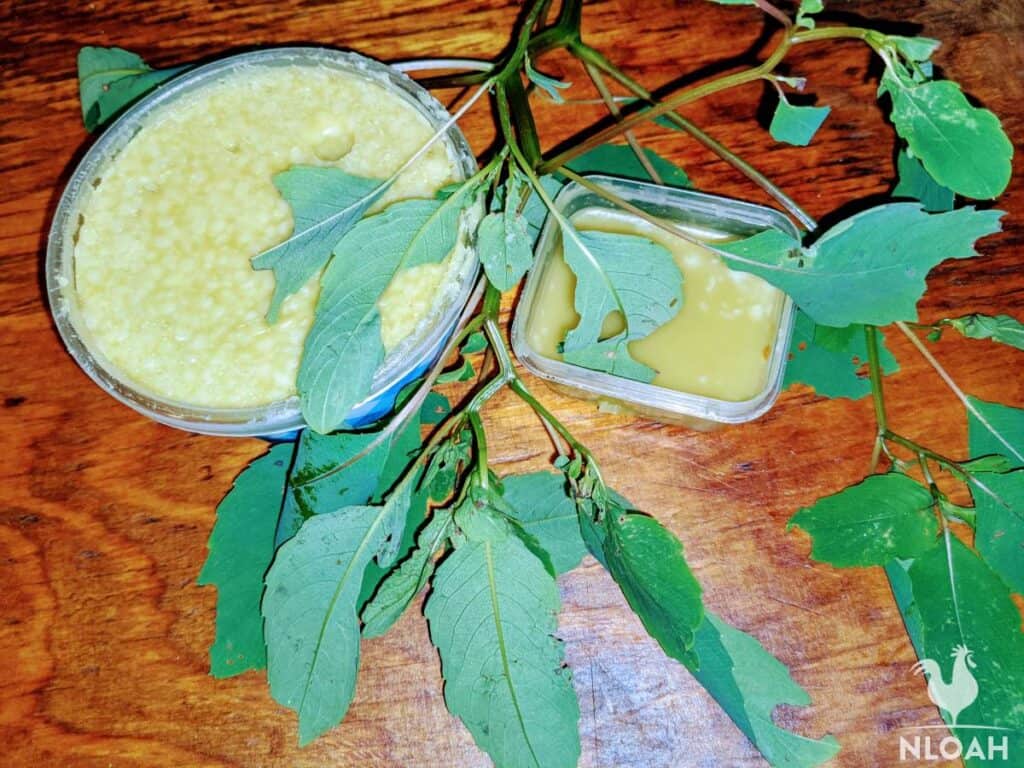
The only actively time consuming task involved with making a crockpot full of jewelweed and plantain involves the actual foraging for the plants… which is part of the fun, anyway.
In fact, making salve in this manner also allows you to let even young members of the family join in on the project. While the crock pot will get warm, and adult supervision is still required, it will not get hot and pose the same dangers as stirring a pot on the stove.
Teaching your children or grandchildren about the healing powers of plants or so-called weeds like plantain, and how to harness them can be used not just as a powerful life lesson but as part of a self-reliance homeschool curriculum.
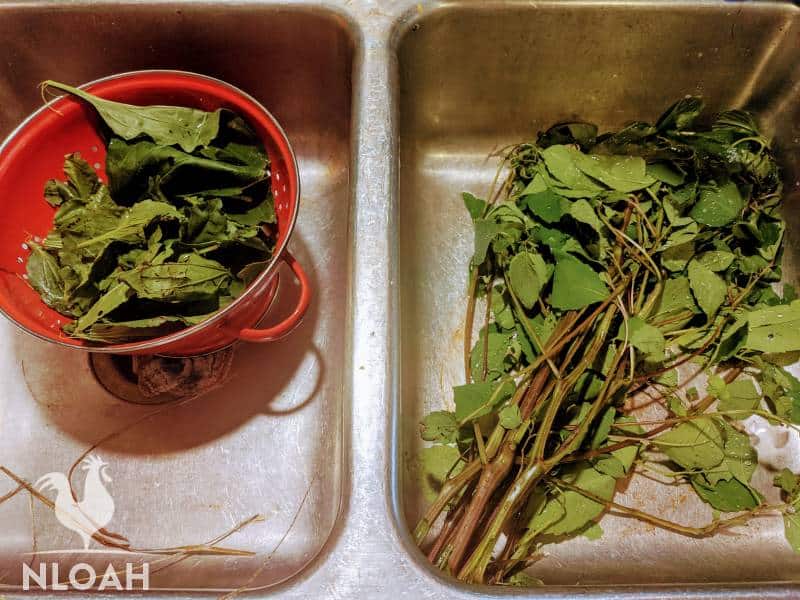
What Is Jewelweed Good For?
Jewelweed has traditionally been used in herbal remedies designed to treat anti-inflammatory, anti-fungal, and anti-histamine issues.
For thousands of years this common wild plant has also been used to ease the pain, swelling, and itching often associated with poison ivy, as well as insectbites and stings.
This plant, which has been heralded as “nature’s hydrocortisone” may also be effective on poison sumac, eczema, ringworm, psoriasis, stinging nettles rash, and acne.
All of the above ground parts of a jewelweed plant can be used to make a salve, wound wash, tincture, or poultice “tea.” The plant should not be harvested for herbal remedy making until after it is in bloom.
Is Plantain A Medicinal Plant?
This common backyard “weed” has been used for centuries to naturally treat insect bites, minor wounds and burns, mild coughs, inflamed skin, eczema, as well as bug bites and stings.
All above ground parts of the broad leaf plantain plant can be used to make salves, ointments, liniments, and tinctures.
Even though both jewelweed and plantain are generally considered safe to use topically or sometimes orally, that does not mean that an allergic reaction or serious health issue could not result from its use.
I am not a medical professional of any type and offer the information in this guide for research and entertainment purposes only. Always consult your physician before using any type of home or herbal remedy.
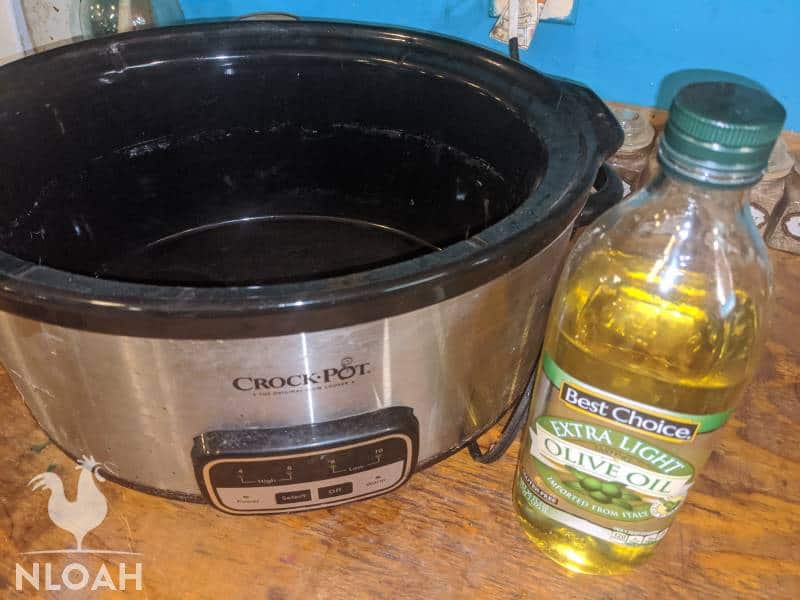
Jewelweed And Plantain Salve Recipe
Instructions
- Collect all of the jewelweed leaves, flowers, and above ground stem parts that you want to make a batch of salve. I typically use a 2 to 1 ratio of jewelweed to plantain.
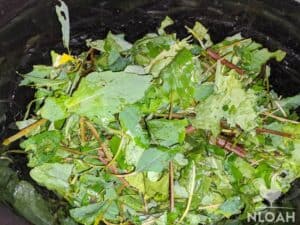
- Tear, rip, or chop all of the jewelweed parts into small pieces. Inspect the leaves, flowers, and stem parts for signs of brown or bug bites. Pitch all but healthy greens or flowers.
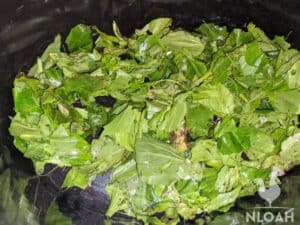
- Forage for the amount of plantain needed to complete the amount desired for the batch of salve.
- Chop or tear the plantain leaves into small pieces, as well.
- Rinse the plant parts in cool or cold water, and then allow them to dry completely. You do not want to add any water or excess moisture.
- Put the jewelweed and plantain pieces into the crockpot.
- Turn the slow cooker on the lowest heat setting.
- Cover the plant parts with your favorite carrier oil – I typically use olive oil or almond oil. It takes roughly one cup of the carrier oil per three cups of plant parts ratio to ensure the green matter (and possibly jewelweed flowers)is thoroughly covered.
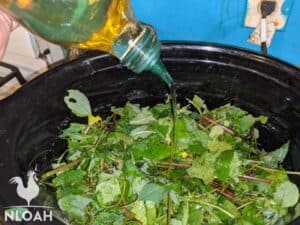
- Gently mash the plant parts into the oil to completely saturate them. The photo below shows how the jewelweed and plantain mixture should look about 30 minutes into the process.
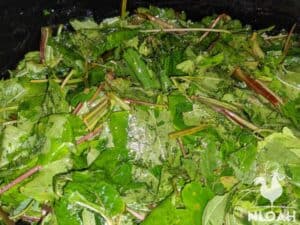
- Many folks who make salve in the crockpot keep the lid off of the slow cooker during the entire process, but I like to leave the lid on for the first 30 minutes or so. This is how the salve mixture should look at roughly the two hour mark.
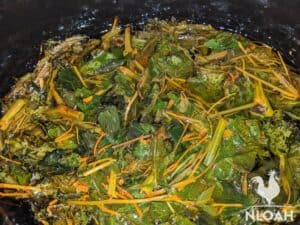
- Leave the mixture in the crockpot for approximately four hours – with the occasionally mashing down and stirring of the plant material. I typically give the plant parts a nice turn, and mashing about once per hour. When the four hours are up, the jewelweed and broadleaf plantain mixture should closely resemble the image in the photo below.
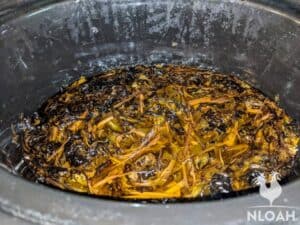
- Strain the liquid and plant matter through cheesecloth or a fine mesh strainer – saving the liquid in a bowl situated beneath for the actual salve making. I highly recommend double or triple layering the cheesecloth so it forms a thicker base for the jewelweed and plantain salve mixture to filter through.
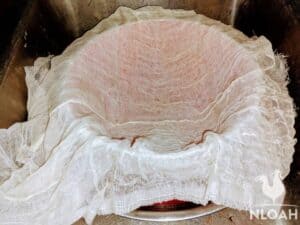
- Push down on the plant matter left in the cheesecloth or fine mesh strainer to get as much liquid out as possible. But, be careful not to push so hard that tiny fragments get through.
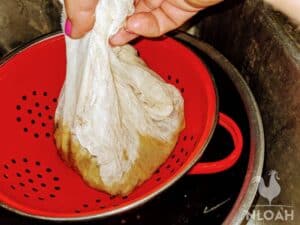
- Any matter that gets through the cheesecloth or strainer and into the liquid can make it into the salve and cause bacteria to grow -reducing the shelf life of the salve.
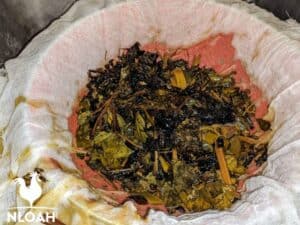
- Straining the liquid through the cheesecloth or fine mesh strainer a second time to help reduce the matter fragments from getting through is highly recommended.
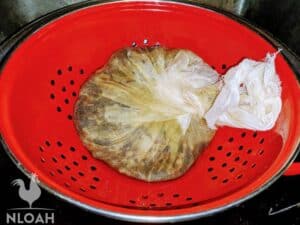
- The strained liquid mixture will look similar to that shown in the image below:
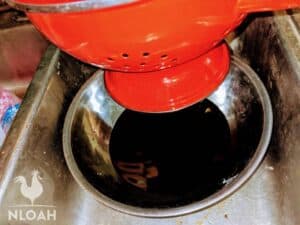
- Rinse out and completely dry the crockpot while the jewelweed and plantain mixture is straining and settling for a few moments.
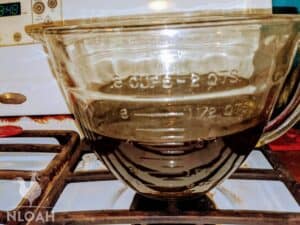
- Pour the still warm to hot strained liquid back into the clean and dry slow cooker.
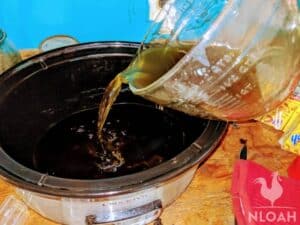
- Measure and pour in the beeswax now. I use a ratio of roughly 1 part beeswax to 4 parts carrier oil – or three tablespoons of wax to 1 cup of the jewelweed and plantain processed oil. Using beeswax pastilles or finely chopped fresh beeswax out of your own hive will substantially speed up the melting process.
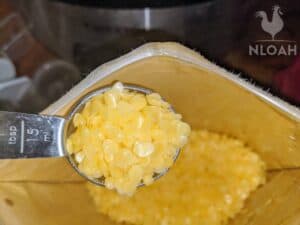
- Turn the crockpot back to the warm or lowest heat setting, and allow the beeswax to melt and become thoroughly stirred into the liquid.
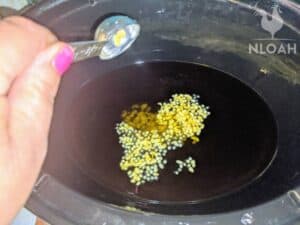
- The photo below depicts how the wax will look when it has been melting into the jewelweed and broad leaf plantain salve mixture for about 10 minutes:
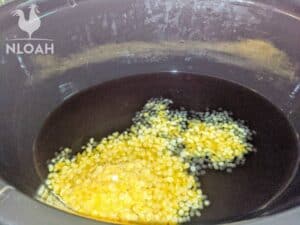
- The melting beeswax after a couple stirs at the 20 minute mark.
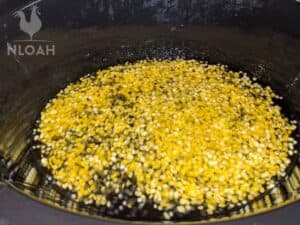
- This is how the beeswax will likely look about 30 to 35 minutes into the melting process – after having been stirred once again:
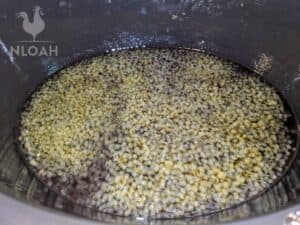
- This photo of the beeswax was taken about 45 minutes in. Until the camera flashed it was impossible to see the small bits of the wax still in the crockpot. After stirring, it only took another five minutes for the wax to be completely melted into the salve mixture.
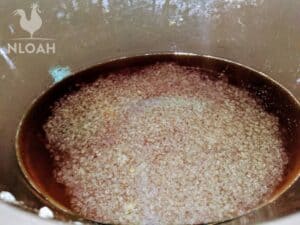
- Pour the jewelweed and plantain salve into containers with a firm fitting lid to store. It will likely take overnight for the salve to completely harden.
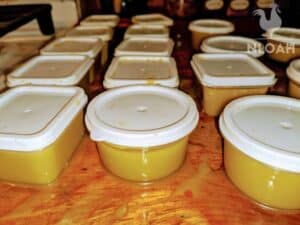
Make sure to check the bottom of each container to see if any brown colored natural matter made it into the salve – it will always settle to the bottom. Even the most diligent salve makers will have this happen from time to time.
You do not need to pitch the container of salve, just use it first because it will likely only remain good to use for a month or so.
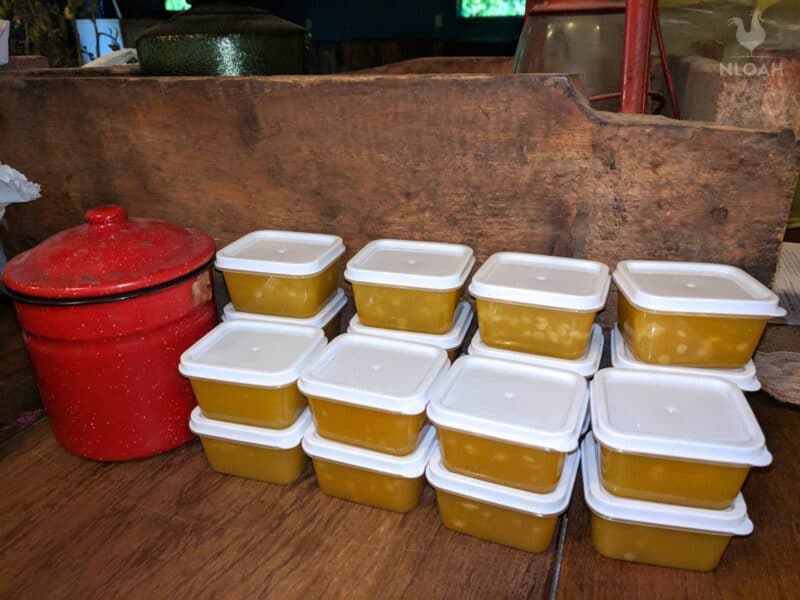
The container of salve below shows you exactly how it should NOT look. There is far too much brown natural matter left in the strained mixture as well as a few undissolved beeswax pastilles:
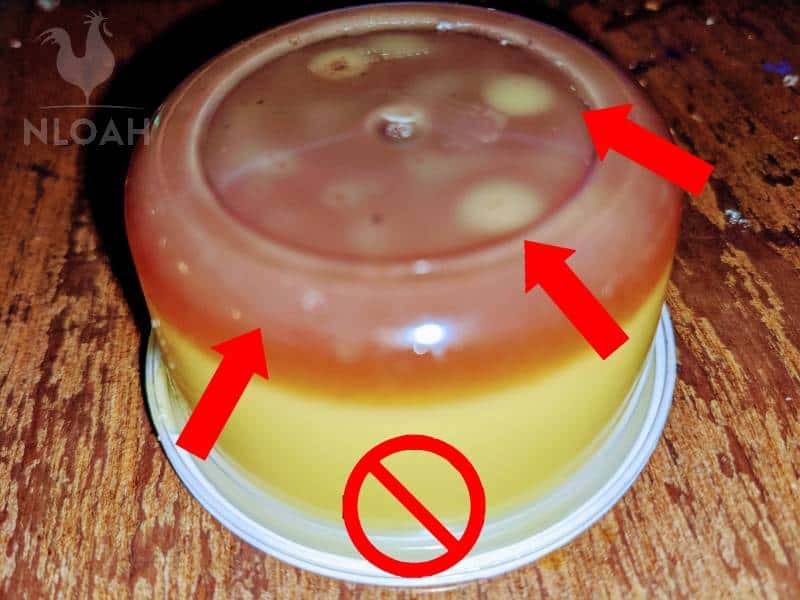
Store the jewelweed and plantain salve in a cool, dry, place out of direct sunlight. Typically, a properly made and stored salve should remain shelf stable for a minimum of 12 months.
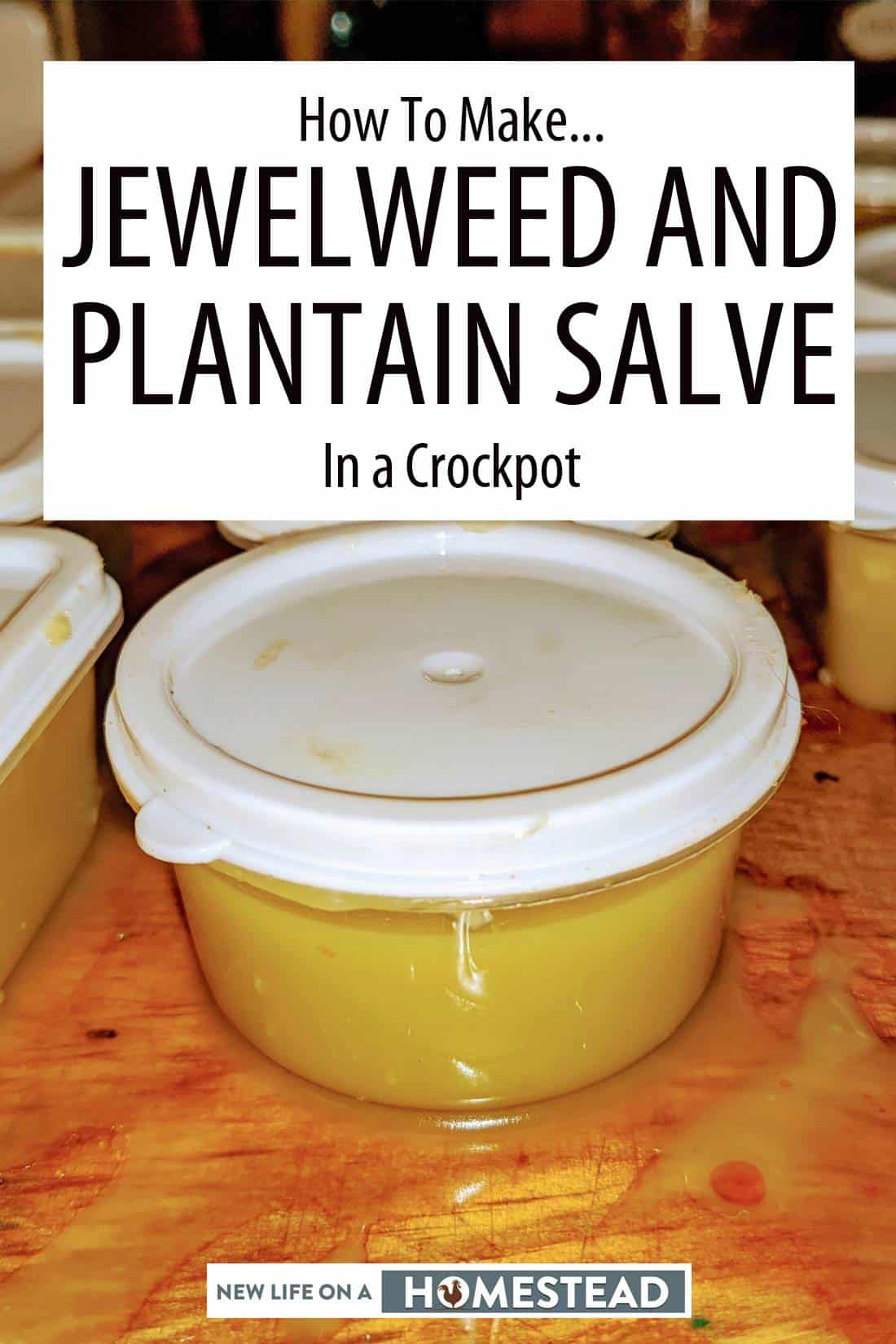

Tara lives on a 56 acres farm in the Appalachian Mountains, where she faces homesteading and farming challenges every single day, raising chickens, goats, horses, and tons of vegetables. She’s an expert in all sorts of homesteading skills such as hide tanning, doll making, tree tapping, and many more.
